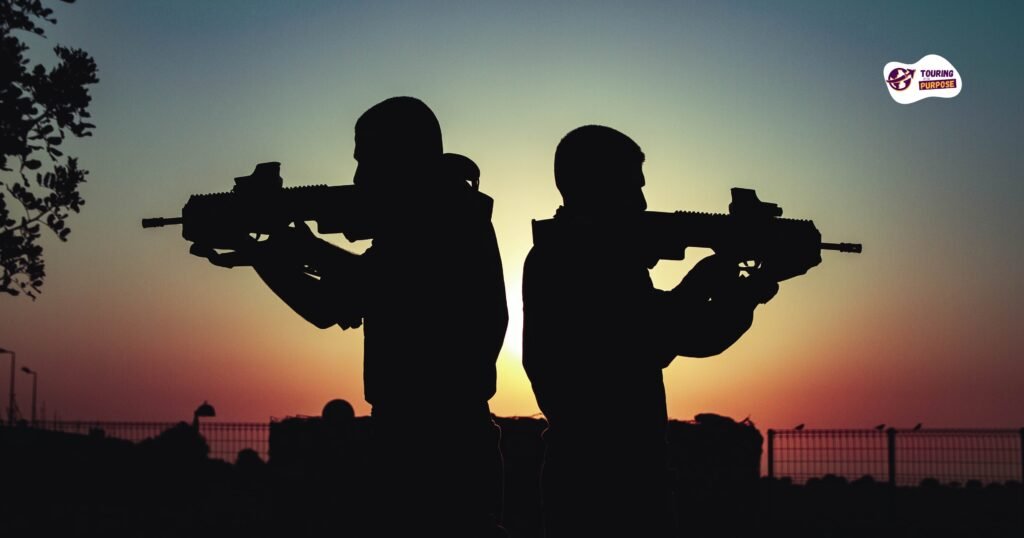They departed with two fully loaded trucks, each transporting 92 tents and 250 family packs, each of which contained a week’s worth of dry rations for a family consisting of two adults.
During the height of the conflict, the number of injured soldiers seeking shelter and medical aid in tents drastically increased. This surge in casualties posed a significant challenge for field medics. With limited resources and space, tending to the wounded became an uphill battle.
Many of these injured soldiers bore the marks of heavy artillery fire. How many injured soldiers are in these tents while others had injuries from close-quarter combat? The tents, initially set up for temporary relief, turned into makeshift hospitals, illustrating the stark reality of the battlefield.
Introduction
The purpose of this document is to present an in-depth exploration of the factors impacting the number of injured soldiers treated in field tents during military conflicts.
In the ensuing sections, how many injured soldiers are in these tents, we shall dissect various parameters such as the nature and extent of the conflict, the geographical proximity to the battlefield, and the resources available at the medical facilities.
The objective is to draw a comprehensive picture that can help in planning and preparing for future military medical needs.

Nature and Extent of the Conflict
The nature and extent of any military conflict directly influence the number of casualties and, subsequently, the need for medical aid in field tents.
Incidents involving heavy artillery fire or close-quarter combat, as observed in our case, tend to inflict severe injuries, thereby increasing the demand for immediate medical attention.
Furthermore, prolonged or large-scale conflicts lead to a higher number of injured soldiers over time, straining the existing medical facilities and necessitating the use of temporary structures like field tents.
Understanding these factors can aid in better resource allocation and contingency planning in future scenarios.
The Intensity of the Conflict
The intensity of the conflict plays a crucial role in determining the number of injured soldiers in the tents.
In times of intense combat, the number of casualties can substantially rise, resulting in a surge in the populace of these makeshift hospitals.
Each conflict carries its own set of challenges, leading to different types of injuries, ranging from physical wounds to psychological trauma, all of which need immediate attention.

Proximity to the Battlefield
The proximity of the medical facilities to the battlefield directly influences the number of injured soldiers they treat.
When field tents are closer to the frontlines, they are more likely to receive a higher influx of wounded soldiers, as rapid treatment can be the how many injured soldiers are in these tents difference between life and death.
However, being closer to the battlefield also exposes these medical facilities to potential attack, posing additional threats to both the medical staff and the injured soldiers.
Available Resources
The resources available in the field tents significantly impact the ability to treat injured soldiers.
This includes not only medical supplies and equipment but also the number of trained medical personnel.
Limited resources can hinder the ability to provide optimal care, resulting in longer recovery times and potentially more severe outcomes for the soldiers.
Conversely, adequately stocked and staffed facilities can ensure prompt and efficient treatment, improving survival rates and recovery times…

Role of Evacuation Procedures
Evacuation procedures play a pivotal role in the overall medical response in combat situations.
The speed and efficiency of evacuations can greatly influence the survival rate of the injured soldiers.
Medevac, or medical evacuation, involves transporting the wounded from the battlefield to medical facilities.
It is a complex procedure that requires coordination and robust communication lines.
The efficacy of these procedures is dependent on several factors, including terrain, weather, and the intensity of ongoing conflict.
Therefore, well-planned and executed evacuation procedures can be instrumental in saving lives during warfare.
The Impact of Technological Advancements
Technological advancements have significantly influenced medical operations in combat situations.
Innovations in medical equipment, from portable X-ray machines to advanced surgical tools, have enhanced the capacity to deliver prompt and effective care in field tents.
The development of sophisticated communication technology has streamlined the Medevac process, ensuring quicker and safer transfer of injured soldiers.
Moreover, advancements in telemedicine now allow medical professionals located far from the battlefield to aid in diagnosis and treatment, thus optimizing the use of available resources.
Such technological progress not only improves survival rates but also contributes to better long-term recovery outcomes for the soldiers.
Training and Preparedness
Training medical personnel for emergencies on the battlefield is a significant component of military medicine.
These professionals must be equipped with the required skills and knowledge to handle trauma and other medical emergencies common in combat situations.
Rigorous training programs can simulate battlefield conditions and how many injured soldiers are in these tents, allowing medical personnel to practice and hone their skills.
Simulation-based training, for instance, replicates real-life scenarios, making it an effective approach to prepare the medical teams for the challenges they may encounter in the field.
Furthermore, continuous education and training updates are crucial to keep the medical staff updated about the latest techniques and technologies in battlefield medicine.
Thus, efficient training and preparedness can considerably enhance the effectiveness of medical response during warfare.
The Capacity of the Medical Facilities
Lastly, the capacity of the medical facilities available determines the number of injured soldiers they can accommodate.
These facilities are generally equipped to handle a certain number of patients, but during times of heightened conflict, they may quickly become overwhelmed.
In some cases, additional tents may be erected to handle the influx of wounded soldiers.
Evacuation and Transportation Systems
The efficacy of military medicine doesn’t solely rest on the medical personnel and facilities.
Equally important are the systems in place for safe and swift evacuation and transportation of injured soldiers.
These systems are designed to move soldiers from the battlefield to medical facilities as quickly as possible; how many injured soldiers are in these tents, thus minimizing delays in treatment.
Various modes of transportation – ground vehicles, helicopters, and even airplanes – can be used for this purpose.
Technology also plays a key role in these systems, with advancements like telemedicine allowing for remote consultations during transit.
Optimizing these systems can significantly boost the speed and efficiency of military medical response.
Conclusion
How Many Injured Soldiers Are in These Tents? The effectiveness of military medicine is influenced by a multitude of factors, ranging from the medical staff’s training and preparedness to the capacity of medical facilities and the efficiency of evacuation and transportation systems. Continual advancements in technology, how many injured soldiers are in these tents, coupled with ongoing education and training, can greatly enhance these aspects, optimizing the delivery of medical care on the battlefield. Ultimately, in the high-stakes realm of military medicine, where every second counts, these factors cumulatively play a pivotal role in saving lives and minimizing the long-term impact of injuries.
FAQs
What are injured soldiers called?
Injured soldiers are often referred to as “casualties” in military terms. The term is used to describe anyone who is lost to the organization through death, disability, injury, or capture. It is important to remember that in a military context, a casualty does not necessarily mean a fatality.
What happened to injured soldiers in WWI?
During World War 1, injured soldiers were transported from the battlefield to field hospitals for immediate treatment. They were then moved to larger base hospitals for further care. The severity of injuries meant that many soldiers were sent back home. For those who couldn’t be treated immediately, the concept of “triage” was used to prioritize treatment based on the severity of injuries.
What were the injuries of the artillery in WWI?
Artillery injuries during World War 1 were often severe, resulting from high-impact explosive shells. They ranged from shrapnel wounds, how many injured soldiers are in these tents, concussions, and burns, to more gruesome injuries like amputations. Post-traumatic stress disorder (PTSD), then known as “shell shock,” was also prevalent due to the intense and continuous artillery bombardment. It was a grim testimony to the devastating power of artillery warfare.
What happened to injured soldiers in WW2?
During World War 2, injured soldiers were treated in field hospitals close to the front lines. They received immediate care to stabilize their condition before being transported to larger military hospitals. Improvements in medical technology, how many injured soldiers are in these tents, such as the development of penicillin and blood transfusions, significantly improved survival rates. Many injured soldiers were rehabilitated and even returned to active duty.































